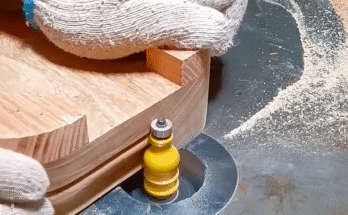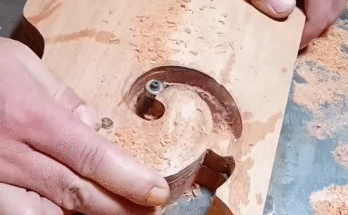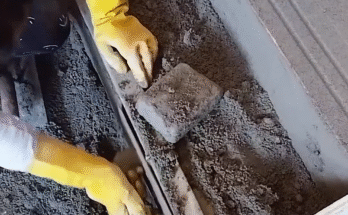Woodturning is a rewarding craft that transforms a raw, irregular piece of wood into a functional and beautiful object. Making a bowl from a log is a fundamental and satisfying project for any woodturner. This guide will walk you through the entire process, from selecting the right log to the final sanding and finishing.
Part 1: Safety and Log Selection
Before you begin, proper safety and material selection are crucial for a successful and safe project.
- Essential Safety Gear:
- Full Face Shield: This is your most important piece of safety gear. It protects your eyes and face from flying wood chips and debris.
- Dust Mask or Respirator: Wood dust can be harmful to your lungs. Always wear a mask, especially when sanding.
- Hearing Protection: Lathes can be noisy, so protect your hearing with earplugs or earmuffs.
- No Loose Clothing or Jewelry: Make sure to wear tight-fitting clothes and tie back long hair to prevent it from getting caught in the spinning machinery.
- Selecting the Right Log:
- Wood Species: Hardwoods like walnut, maple, cherry, and oak are popular choices for their durability and beautiful grain.
- Moisture Content: Green (wet) wood is often easier to turn and less prone to cracking during the process, but it requires careful drying afterward. Dried lumber can also be used but requires sharper tools.
- Condition: Choose a log with minimal cracks, knots, or insect damage. The size of the log should be appropriate for the capacity of your lathe.
Part 2: Preparing and Mounting the Log
Proper preparation ensures the log is secure on the lathe and balanced for a smoother turning process.
- Cut and Shape the Blank:
- Cut the log to the desired thickness using a chainsaw or bandsaw.
- Find the center of the log’s face using a straightedge and a pencil. Draw a line from corner to corner to find the intersecting point.
- Roughly shape the log into a cylinder or octagon to reduce vibration on the lathe.
- Mounting the Blank on the Lathe:
- Secure the log between the headstock and tailstock of the lathe.
- Use a spur center on the headstock and a live center on the tailstock to hold the log firmly in place.
- Tighten the tailstock until it bites into the wood, ensuring the log is centered and stable.
Part 3: Shaping the Outside of the Bowl
This is where you’ll start to see the bowl take shape.
- Roughing Out:
- Start the lathe at a low speed.
- Use a roughing gouge to remove the outer bark and irregular parts of the log, turning it into a smooth cylinder.
- Gradually increase the speed as the log becomes more balanced.
- Shaping the Exterior:
- Using a bowl gouge, begin to shape the outside of the bowl.
- Start from the rim and work your way down to the base. Create a gentle curve or a sharper, more defined profile.
- Turn a tenon (a small cylindrical protrusion) on the bottom of the bowl. This will be used to hold the bowl in a chuck for hollowing the inside.
Part 4: Hollowing the Inside of the Bowl
Once the outside is complete, you’ll flip the bowl to hollow out the interior.
- Reverse the Bowl:
- Turn off the lathe and remove the bowl from the spur center.
- Mount a woodturning chuck on the headstock and clamp the tenon you created securely in the chuck jaws.
- Bring the tailstock up to the center of the bowl’s rim for support during the initial hollowing.
- Hollowing the Interior:
- Start the lathe and begin removing wood from the inside of the bowl using a bowl gouge.
- Work from the center outwards, or from the rim inwards, depending on your preferred technique.
- Continue hollowing until the walls of the bowl are at your desired thickness. A caliper can be used to measure the thickness as you work.
Part 5: Sanding and Finishing
The final steps are what give your bowl its smooth, polished feel and a lasting finish.
- Sanding:
- Remove the tailstock and use your hands to support the rim while sanding.
- Start with a coarse sandpaper (e.g., 80 or 120 grit) and work your way through finer grits (e.g., 180, 240, 320).
- Sand with the grain of the wood as much as possible to avoid circular scratches.
- Finishing:
- Apply your chosen finish (e.g., a food-safe mineral oil, lacquer, or wax) while the bowl is still on the lathe and spinning at a slow speed.
- Follow the manufacturer’s instructions for application, drying time, and buffing.
With patience and attention to detail, you’ll turn a simple log into a beautiful, handcrafted bowl that will be treasured for years to come.


